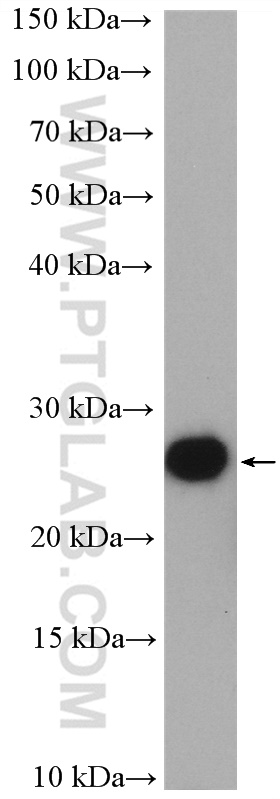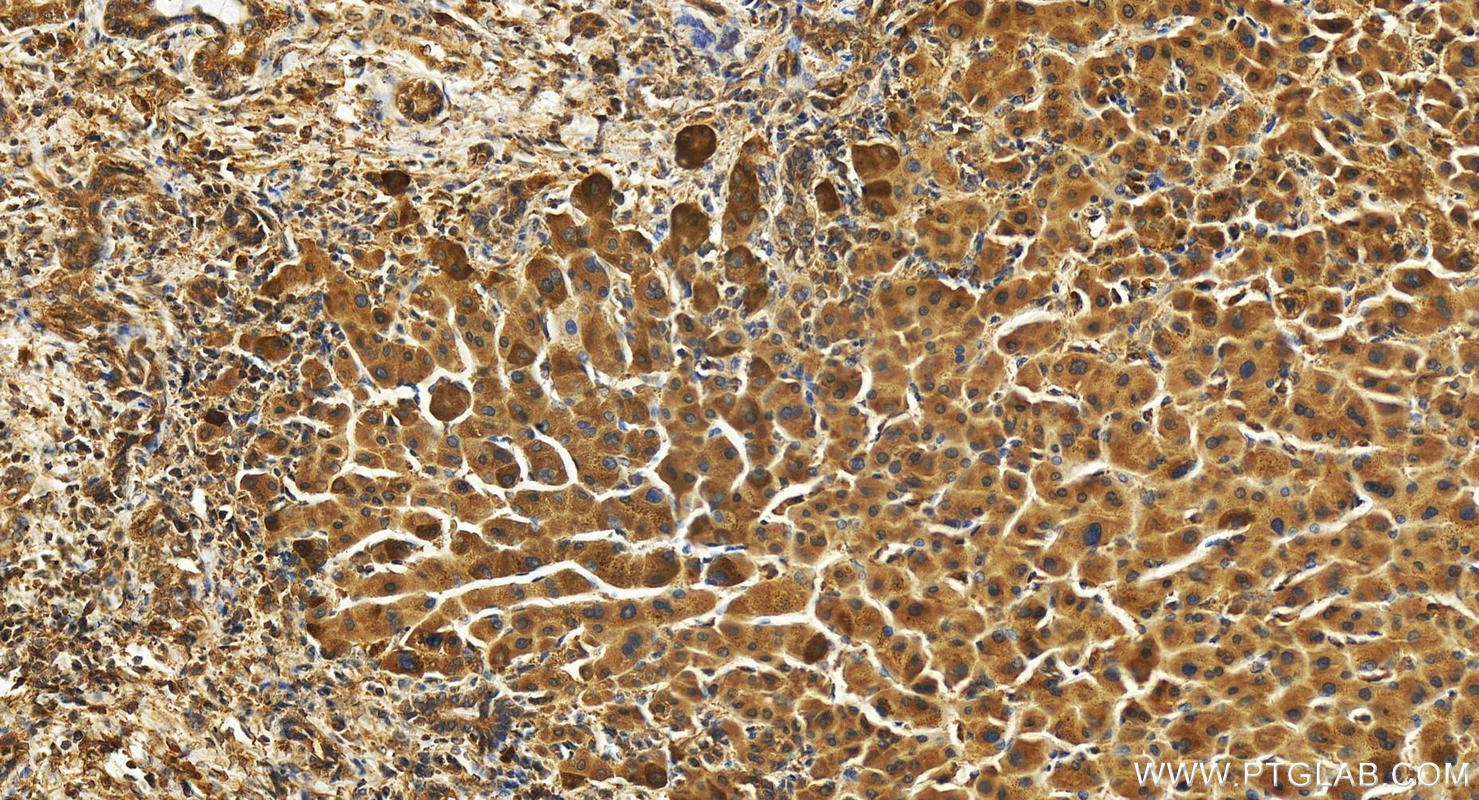验证数据展示
经过测试的应用
| Positive WB detected in | NIH/3T3 cells |
| Positive IHC detected in | human intrahepatic cholangiocarcinoma tissue Note: suggested antigen retrieval with TE buffer pH 9.0; (*) Alternatively, antigen retrieval may be performed with citrate buffer pH 6.0 |
推荐稀释比
| 应用 | 推荐稀释比 |
|---|---|
| Western Blot (WB) | WB : 1:200-1:1000 |
| Immunohistochemistry (IHC) | IHC : 1:50-1:500 |
| It is recommended that this reagent should be titrated in each testing system to obtain optimal results. | |
| Sample-dependent, Check data in validation data gallery. | |
产品信息
25410-1-AP targets TTDN1 in WB, IHC, ELISA applications and shows reactivity with human, mouse, rat samples.
| 经测试应用 | WB, IHC, ELISA Application Description |
| 经测试反应性 | human, mouse, rat |
| 免疫原 |
CatNo: Ag22094 Product name: Recombinant human C7orf11 protein Source: e coli.-derived, PET30a Tag: 6*His Domain: 1-179 aa of BC026265 Sequence: MQRQNFRPPTPPYPGPGGGGWGSGSSFRGTPGGGGPRPPSPRDGYGSPHHTPPYGPRSRPYGSSHSPRHGGSFPGGRFGSPSPGGYPGSYSRSPAGSQQQFGYSPGQQQTHPQGSPRTSTPFGSGRVREKRMSNELENYFKPSMLEDPWAGLEPVSVVDISQQYSNTQTFTGKKGRYFC 种属同源性预测 |
| 宿主/亚型 | Rabbit / IgG |
| 抗体类别 | Polyclonal |
| 产品类型 | Antibody |
| 全称 | chromosome 7 open reading frame 11 |
| 别名 | C7orf11, ABHS, TTD non-photosensitive 1 protein, ORF20, MPLKIP |
| 计算分子量 | 179 aa, 19 kDa |
| 观测分子量 | 23 kDa |
| GenBank蛋白编号 | BC026265 |
| 基因名称 | TTDN1 |
| Gene ID (NCBI) | 136647 |
| RRID | AB_2935461 |
| 偶联类型 | Unconjugated |
| 形式 | Liquid |
| 纯化方式 | Antigen affinity purification |
| UNIPROT ID | Q8TAP9 |
| 储存缓冲液 | PBS with 0.02% sodium azide and 50% glycerol, pH 7.3. |
| 储存条件 | Store at -20°C. Stable for one year after shipment. Aliquoting is unnecessary for -20oC storage. |
背景介绍
TTDN1 colocalizes with Plk1 at the centrosome in mitosis and the midbody during cytokinesis. It is phosphorylated by Cdk1 in mitosis, and this is required for its interaction with Plk1. Overexpression of TTDN1 or its knockdown by siRNA causes multi-polar spindles and multiple nuclei, suggesting that TTDN1 plays a role in regulating mitosis and cytokinesis. Mutations in the TTDN1 gene are associated with a distinct trichothiodystrophy phenotype. (PMID:17310276, 25290684)
实验方案
| Product Specific Protocols | |
|---|---|
| IHC protocol for TTDN1 antibody 25410-1-AP | Download protocol |
| WB protocol for TTDN1 antibody 25410-1-AP | Download protocol |
| Standard Protocols | |
|---|---|
| Click here to view our Standard Protocols |



